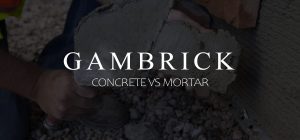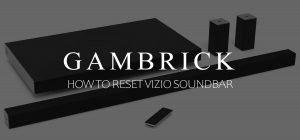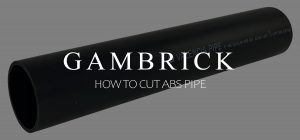
Does Concrete Burn?
Concrete is one of the most resistant building materials to heat and fire. It’s made by mixing sand, aggregate stone and cement with water and contains no flammable ingredients. Concrete is a form of masonry like brick, clay or stone. And like other masonry products, it does not burn. In fact it doesn’t get damaged by fire at all unless exposed to heat thousands of degrees Fahrenheit. This is much hotter than a typical house fire would get. Rather than burn, at extremely high temperatures concrete breaks down, becomes brittle and can return to a powder like form, but it doesn’t catch fire.
This natural fire resistance gives houses built with concrete a big safety advantage. A homes walls, floors and even the ceiling can be built out of solid concrete with some steel for reinforcement. This type of construction gives a home tremendous fire resistance that no wood framed house can even come close to.
Concrete can get extremely hot, but it won’t catch fire because it doesn’t contain organic material. But concrete can buckle from heat, so this should be accounted for in your design.
Steel is a comparable building material to concrete in terms of fire resistance. But at very high temperatures it gets soft and bends. This is a major flaw when working with steel beams. Concrete isn’t effected by heat until temperatures get extremely high, in which case, it will become brittle and may break but won’t bend or catch fire.
Do Concrete Walls Burn In A Fire?
Concrete structures are more likely to remain standing after a fire than structures made from other materials like wood. We can see this result all around the world because concrete is a very popular building materials. It’s been used to build homes and buildings for centuries. When we look at old building that caught fire, the concrete remained relatively undamaged while the wood burned away. This is a very common result because most homes use a combination of wood and concrete.
If you look at any home that’s caught fire you’ll see the same thing. The wood walls and ceiling will be badly burned. Sometimes they’ll even be completely destroyed. But the concrete walls and foundation will remain undamaged and can often be re-used.
Unlike wood, concrete does not burn. Unlike steel, it does not get soft or bend. Concrete doesn’t break down until it’s exposed to thousands of degrees Fahrenheit. This is much hotter than a typical house fire.
Not only do we have thousands of examples to look at all over the world, but it’s also been confirmed in fire-wall tests. In these tests, solid concrete walls were subjected to flames and temperatures of up to 2000° F for as long as four hours. None of the concrete walls failed structurally for a very simple reason. Concrete doesn’t catch fire and burn.
In contrast, wood frame walls typically collapsed in an hour or less. Steel’s failure time and temperature varies based on the type and thickness used. It has much more fire resistance than wood but not as much as concrete.
All the concrete walls tested were flat and had no significant breaks in the concrete layer. The concrete walls also had a continuous concrete layer. This is typical of ICF and other solid concrete walls.
Do Concrete Walls Stop Fires From Spreading?
In some cases a concrete wall can stop a fire from spreading. Since concrete won’t catch fire there’s no way for fire to burn through it. If you have a wood ceiling, floor or doorway the fire can pass through those areas. But it won’t go through solid concrete. Concrete has a slow rate of heat transfer. This means concrete walls in a home act as a fire shield. They protect adjacent rooms from catching fire and remain strong.
Concrete walls also don’t add fuel to the fire. When fire hits a wood wall it can not only pass through but also consume it. Wood walls feed the fire. Concrete won’t do that. So even in cases where fire finds a way around the wall, concrete won’t burn.
Walls that won’t burn can be a very good way to prevent or delay the spread of a fire. Whenever you can limit the amount of flammable material in a home it’s a good thing. Walls that can’t be burnt is definitely a better option in a fire than walls made from wood.
The fire-wall tests confirmed this once again. The tests measured how well a wall slows the passage of heat and fire from one side to the other. Concrete walls did not allow flames to pass directly through. They also didn’t allow enough heat through the wall to start a fire on the other side. This was tested for 2 to 4 hours with concrete walls 5 inches.
In contrast, wood walls typically catch fire and allow heat to start a fire on the other side in less than an hour. In some cases an entire home can be engulfed in flames in a matter of minutes. Wood offers no real resistance to fire but concrete does.
Will ICF Foam Burn?
Many solid concrete walls are made with forms that stay in place after the concrete is poured. These forms are called ICF, which stands for Insulated Concrete Forms. Concrete alone isn’t a very good insulator and since the walls are solid you can’t put insulation inside them like you can with wood. Rigid foam insulation boards on both sides of the concrete wall can provide enough insulation for the home. But are they flammable?
Foams used to build ICF forms and other rigid insulation boards are manufactured with flame retardant additives. In a fire, the foam is designed to melt instead of catching fire. It’s not impossible to burn but it’s far less flammable than wood.
Every type of home needs some sort of insulation. It helps regulate internal temperatures and keep energy costs down. And it’s not just about heat. Even homes in hot climates benefit from insulation because it helps keep the home cool. So if your gonna have insulation you may as well use a type that’s not as flammable. Flame retardant insulating foam is a good way to go if your concerned about fires. Especially when paired with solid concrete wall. This combination of materials can help reduce house fires and slow the spread if one does occur.
Building codes require covering foam insulation. On the inside you should use a fire-resistant material like gypsum wallboard or plaster.
You can use a fire-resistant siding material on the outside too. Consider cement stucco, fiber-cement, brick or stone.
And of course the more you can design your home to limit the exposure of flammable materials like wood and fabrics, the better off you are.
Concrete Is Fire Resistant & Won’t Burn
It’s very important to consider fire when designing a house. As a builder and a designer, we take all sorts of precautions to not only meet but also exceed the fire code.
Most people believe it takes fire to make fire. For example, the stove, fireplace, candles, a lighter, cigarette, sparks or a pilot light. But that’s not always the case. Lots of house fires are actually started by heat. If a flammable curtain blows onto a hot light bulb it can catch fire and ignite an entire house in minutes. It doesn’t necessarily take fire to create a house fire. Heat is a big problem. And there are a lot of hot things inside a typical home sitting right next to flammable items.
Luckily concrete is a material that’s impervious to flames.
Fire resistance refers to a material’s ability to resist catching fire when exposed to heat and fire. Determining a building material’s fire resistance takes into account two very important factors.
- The rate of heat transfer. Will extreme heat on one side of a material be able to pass through it and ignite things on the other side. Concrete has a slow heat transfer.
- Combustibility of the material under variable conditions such as temperature, ventilation, and fuel sources. Concrete does not typically burn.
While concrete walls can generally withstand up to four hours of extreme fire before they become brittle, most wood-framed walls would fall in less than an hour. And most house fires don’t get hot enough to make concrete weak.
Using fire resistant materials is very important in construction. They help maintain the structural integrity of a home when exposed to a fire and slow the spread if a fire does occur.
Concrete Is Expensive To Build With
Concrete is a fantastic building material that’s been used around the world for centuries. These days we use more wood because it’s a cheaper option. But it’s not necessarily better. Currently, around 15 percent of new homes built in the U.S. are built with concrete. But that’s a trend that’s accelerating as more homes are built in a Modern style. A home made of concrete is simply built better and will last much longer than a wood framed house.
The issue with concrete has always been the high cost, so most people don’t even consider it. They just assume all are just built out of wood. But concrete is definitely a good choice to consider. Historically it adds about 5-7% to the overall cost of the house but that’s getting lower. Since Corona Virus hit the US, wood prices have more than doubled, but concrete hasn’t gone up much. This makes it a viable option at the current price levels.
There is also the skill level required. Working with wood is easy but concrete is a specialty. You need a good mason to build the forms and pour the concrete.
Considering that wood is vulnerable to rot, fire, mold, mildew, water damage and bug problems, it’s surprising more people don’t build with concrete in the U.S. like they do in other countries. But if the cost of wood keeps rising and concrete remains steady I think more people will consider it.
Concrete is a more durable building material than wood and far more resistant to fire. It’s being used to build homes all around the world every day. If your looking for an alternative building material to wood then concrete is definitely worth considering.
Can Fire Resistant Concrete Be Used To Build More Than Just Walls?
Yes. An entire home can be built out of concrete including the floors and ceiling.
Slab on grade house designs are easy to do but what about when the slab is elevated? When you have a basement or plan on using concrete as a roof construction gets a little harder but it’s still possible. Steel reinforcement is used to increase concrete’s tensile strength. This makes it possible to span much longer distances without cracking the concrete.
Thick steel rebar is placed inside the slab which greatly increases it’s tensile strength. The concrete can also be poured on top of a steel pan which holds the concrete in place as it cures. This can be done as both a floor and ceiling. However, if you plan on building a flat concrete roof you should include some additional waterproofing since concrete absorbs a lot of water.
Additional supports should also be included because concrete is a very heavy building material when compared to wood. But the advantage of building this way is vastly better fire resistance. You concrete floors, walls and ceilings won’t catch fire and burn. We see this all over the world when more concrete is used. House fires here in the U.S. can destroy an entire home in minutes. But concrete homes used in other countries do much better and the fire spreads slower. This gives the occupants more time to get out safely. It’s also easier to isolate and put out a fire since it’s harder for it to spread. If you include fire resistant doors and a home sprinkler system house fires would be much less of an issue than they are right now.
Summary: Does Concrete Burn?
Concrete is one of the most resistant building materials to heat and fire. It’s made by mixing sand, aggregate stone and cement with water and contains no flammable ingredients. Concrete is a form of masonry like brick, clay or stone. And like other masonry products it does not burn. In fact it doesn’t get damaged by fire at all unless exposed to heat thousands of degrees Fahrenheit. This is much hotter than a typical house fire would get. Rather than burn, at extremely high temperatures concrete breaks down, becomes brittle and can return to a powder like form. But it doesn’t catch fire.
This natural fire resistance gives houses built with concrete a big safety advantage. A homes walls, floors and even the ceiling can be built out of solid concrete with some steel for reinforcement. This type of construction gives a home tremendous fire resistance that no wood framed house can even come close to. In case of a house fire, the contents inside the home may burn but the house itself won’t.
Steel is a comparable building material to concrete in terms of fire resistance. But at very high temperatures it gets soft and bends. This is a major flaw when working with steel beams. Concrete isn’t effected by heat until temperatures get extremely high, in which case, it will become brittle and may break but won’t bend or catch fire.

John Mazzuca | About | More Posts |
Custom Home Builder
John Mazzuca is a custom home designer and builder at Gambrick with over 25 years experience in the construction industry. John has designed, built and/or remodeled hundreds of homes, small buildings, and commercial projects. He writes about business, real estate, home building, and household electronics. His work has been featured in Fox Business, Better Homes & Garden, House Beautiful, and more.




















